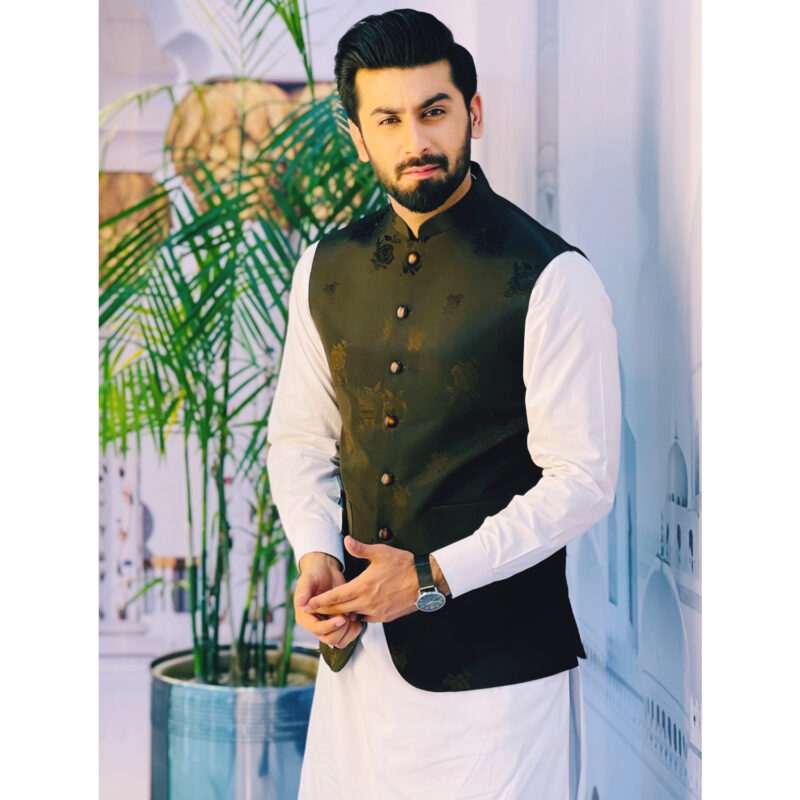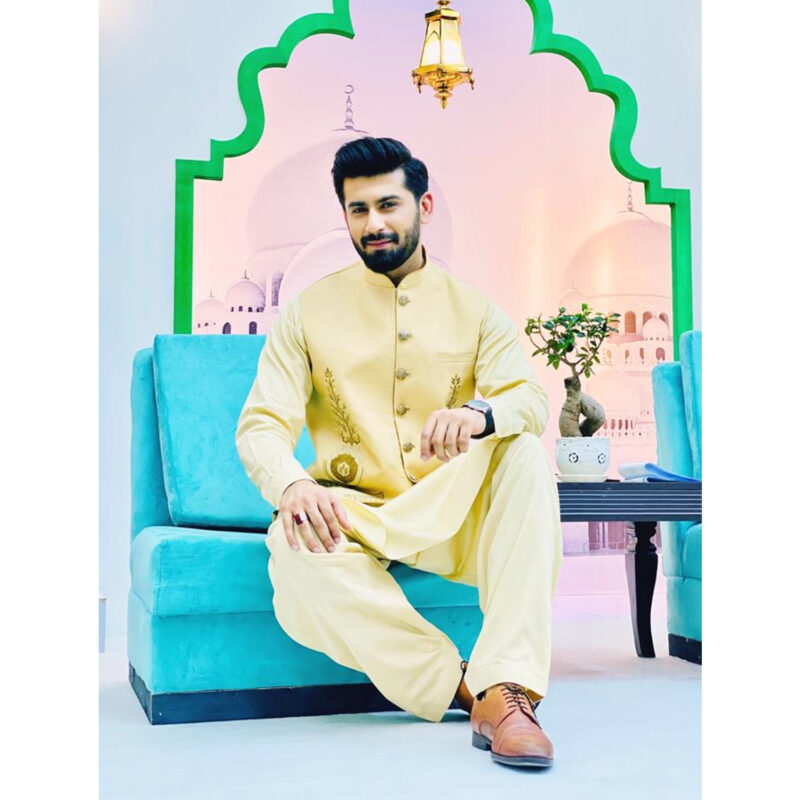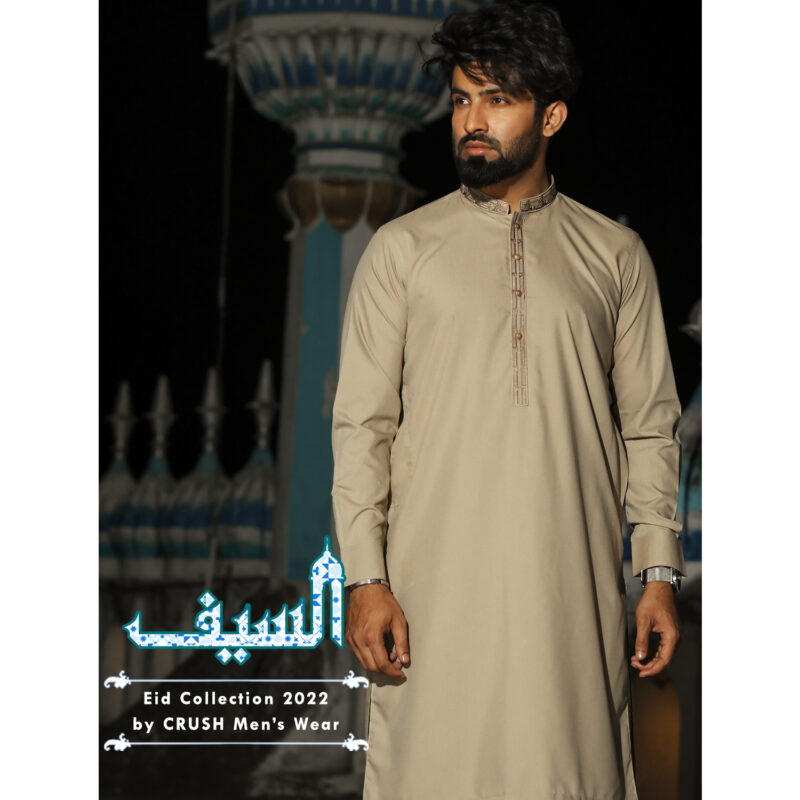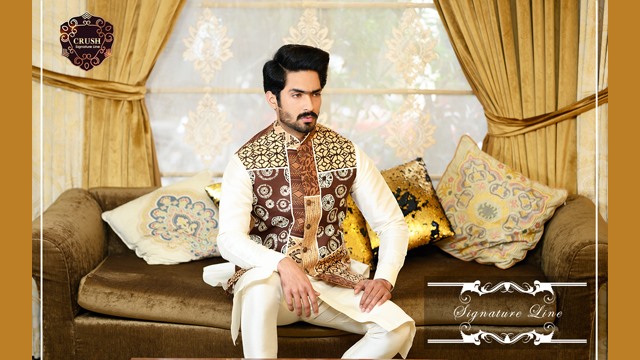Style
The Traditional Sensational – Waistcoat & Kurta
Waistcoat:
A waistcoat or waistcoat is an essential item of clothing for everyone who appreciates traditional elegance. It is a crucial component of men’s dressing. It has evolved to take center stage in the male wardrobe by serving as a necessary leader in ceremonies and an invaluable ally in business or casual settings.
All you need to know about waistcoats, including their history, traits, selection, pairing, and wearing guidelines.

The word waistcoat comes from the French word waistcoat, which means “jacket, sport coat.” This word’s root is the Turkish word yelek, which refers to a sleeveless jacket used by men and women throughout the Ottoman Empire.
The term waistcoat is used in addition to waistcoats. In everyday speech, vests and waistcoats are frequently used interchangeably to designate the same article of clothing, but they are not always wholly equivalent.
A more general phrase for a sleeveless, casual, and sporty piece of clothing—such as a sweater or jacket—worn mostly over other clothing is “waistcoat” (a shirt or jacket).
The waistcoat is the most appropriate term to describe the core component of the three-piece suit, along with the jacket and pants or shalwar kameez. It is sleeveless, worn below the jacket over a shirt, and always worn with a tie or bow tie.
Despite these variations, it is commonplace in language to refer to the waistcoat as a waistcoat; the converse is not always appropriate. For instance, consider the orange or yellow waistcoats used on construction sites; the term “yellow waistcoat” might sound a little out of place.

Following the French Revolution in 1789, anti-aristocratic feelings in France (and throughout the rest of Europe) impacted both men’s and women’s clothing choices. Waistcoats were significantly less ornate, shorter, and thinner and took on a secondary stylistic function to the overcoat.
The waistcoat was further demoted to a secondary role in the three-piece suit in the 1800s with the introduction of the jacket, also for practical reasons: the waistcoat was primarily employed to conceal the suspenders and house the pocket watch in the designated pocket.
The three-piece suit was gradually dismantled beginning in the 1920s in favor of a freer, less constrained by traditional elegance fashion as belt use became more widespread and wristwatches took the place of pocket watches.
The use of the waistcoat today is no longer constrained by any practicality; this stylistic emancipation has allowed it to regain its dignity in the characterization of the male wardrobe. If, on the one hand, this trend has resulted in a more casual business style, marked by more frequent use of the two-piece suit (jacket and trousers), on the other hand, the use of the waistcoat today is no longer constrained by any practicality.
Kurta:
The kurta is the most popular or essential ethnic attire for males. Looking back at the history and origins of Indian clothing, we can observe the prominence of kurtas as daily comfort clothing, whether it be the elegant or opulent designer kurta for men or the most basic men’s kurta designs that are made to order by your neighborhood tailor. The men’s kurta set is never out of style because it is cozy, fashionable, and up-to-date.

Weddings and festive occasions are perfect occasions to wear men’s kurta embroidery styles. The Lucknowi Chikan Kurta is fashionable and timeless and may be worn throughout the year. Kurtas with threadwork can seem elegant and stylish. This is a style perfect for those who don’t like to wear Indian kurtas with heavy embellishments but still want a heavy kurta set. Mirror and jaal embroidery on kurtas are popular right now.
Floral is also fashionable right now, and kurtas can also feature this pattern. Floral-printed kurtas go well with light-colored churidars. For daytime occasions, these kurtas are perfect. For these kurtas, be sure to pick pastel hues. Pick from colors like peach, mint green, baby pink, or baby blue, among others. You can add a shimmering border to your kurta if you think it’s too plain.
Kurtas with geometric patterns have a contemporary feel. When it comes to this particular print, you can also employ contrast shades. Either aligned prints or random geometric prints are options. Pick from hues like rust, olive green, dark blue, pink, lemon yellow, and others.

Kurtas come in various sizes and are worn for various situations. The length of the kurta also determines the atmosphere of the ensembles. Men’s short kurtas come in two different lengths. Both varieties of men’s kurtas are among the simplest outfits to pull off for your casual look with a traditional touch. The first one is longer than a shirt but less than a kurta length, meaning until your thighs, while the second is until your waist. For a festive and relaxed occasion, a short kurta for men looks great with jeans and denim.
Suppose you want something that draws people’s attention. Red, orange, shades of yellow, and blue are in style and may make a kurta seem fantastic. Given that most individuals dress in neutral hues, wearing bold colors will help you stand out in a crowd.
Get a fashion consultation regarding your very clothing needs and the latest trends in Men’s clothing by visiting our outlet 1st Floor, Zarkoon Plaza, near KFC, Saddar, Rawalpindi or call us at 03-1111-CRUSH (27874).

